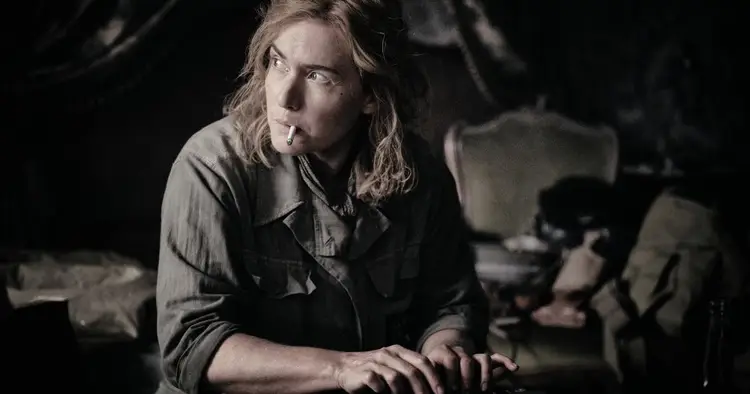Lee review: Lee Miller’s life during wartime

"Lee" is a war movie that begins with a deafening cacophony of gunfire as war correspondent Lee Miller, played by Kate Winslet, navigates through a maze of sandbags, the camera capturing her every move closely. The Lee depicted in the early scenes has discovered her mission: to reveal the brutal realities of war through bold imagery and on-the-ground reporting, showcasing a distinctive approach that was uniquely hers. Some of the harrowing images of conflict and genocide she captured even made their way into Vogue magazine, where she had previously modelled, embodying the glamorous spirit of the Jazz Age. However, she famously asserted a preference for photographing reality over being a part of it.

Lee doesn't present the vibrant and intricate portrayal of a complex, intriguing woman that you might anticipate based on Antony Penrose’s 1985 biography of her, titled The Lives of Lee Miller. In his book, Penrose explores the many often conflicting phases of her life: she was a successful model who became a surrealist artist collaborating with her lover and mentor, Man Ray; she transformed from a free spirit into a renowned war photographer; and she was a hesitant mother who eventually found fulfillment as a skilled chef. The film Lee primarily focuses on her experiences during the war, suggesting that the lasting impact of that challenging period overshadowed everything else in her life. The rest of her story seems to fade into the background.
In a Vogue interview from last year, Kate Winslet, both the producer and star of the film, emphasized her desire to center the narrative around the work of the artist Lee Miller rather than her relationships or the glamorous artistic world she was a part of. This approach is admirable, especially considering that art history has often reduced Miller to just a muse, model, and romantic partner. However, completely overlooking the complexities of her romantic life results in a flat, one-dimensional portrayal. After all, who says that relationships don’t involve significant effort? In the movie, Lee encounters surrealist artist Roland Penrose (played by Alexander Skarsgård) while vacationing in the south of France with her famous artistic friends. Their passionate romance leads to Lee relocating to London right before World War II begins.
The classic romantic moment has been simplified, and their love story has been cut short, even though the truth was much more complex. When Lee first encountered Roland, she was already in a marriage with a wealthy Egyptian businessman named Aziz Eloui Bey. Meanwhile, Roland was also tied to Valentine, a French surrealist poet and collage artist. Lee stayed married to Aziz for 13 years, and Antony Penrose describes their relationship as one of the oddest he has ever witnessed. By removing all potentially scandalous details in favor of a feminist perspective, the film loses some of its vitality. During much of it, I found myself questioning why Lee didn't pursue a relationship with the appealing David E. Scherman, a famous war photographer she worked with, played wonderfully by the comedic Andy Samberg in an unexpected dramatic role. Some stories suggest they may have been involved, but maybe that's not the main issue.
What stands out in the film is the remarkable cast, especially Kate Winslet. Director Ellen Kuras, who worked with Winslet in 2004 on Eternal Sunshine of the Spotless Mind, has crafted a narrative that presents a ‘woman’s perspective’ on war. Winslet embodies Lee’s relentless spirit, brave yet reckless nature, and her deep sense of moral outrage, delivering a performance that seems to push through relentless physical fatigue. Lee is seen struggling up hills, taking swigs of whiskey inside army tanks, and her portrayal resonates with the experiences of someone in middle age. Andrea Riseborough shines as Audrey Withers, the editor of British Vogue, infusing her character with a hilariously sharp intensity. Audrey becomes Lee’s staunch ally and close friend, advocating passionately to feature her Holocaust images in the magazine's glossy pages.
In addition to featuring impressive performances, Lee doesn't linger too long and is sure to bring many people into contact with an amazing collection of work. She documented significant historical events: from her surreal photos of the London Blitz to her haunting images of the Buchenwald and Dachau concentration camps, to the liberation of Paris and the fall of the Nazi regime, which she memorably captured in a striking image of herself in Hitler's bathtub. It's unfortunate that such an extraordinary life has to be recounted in such a traditional manner.
► Lee is set to hit UK theaters on September 13.
Join Sight And Sound's Weekly Film Bulletin!
Every Friday, we share news, reviews, and archived content, along with updates on our latest magazine once a month.













































